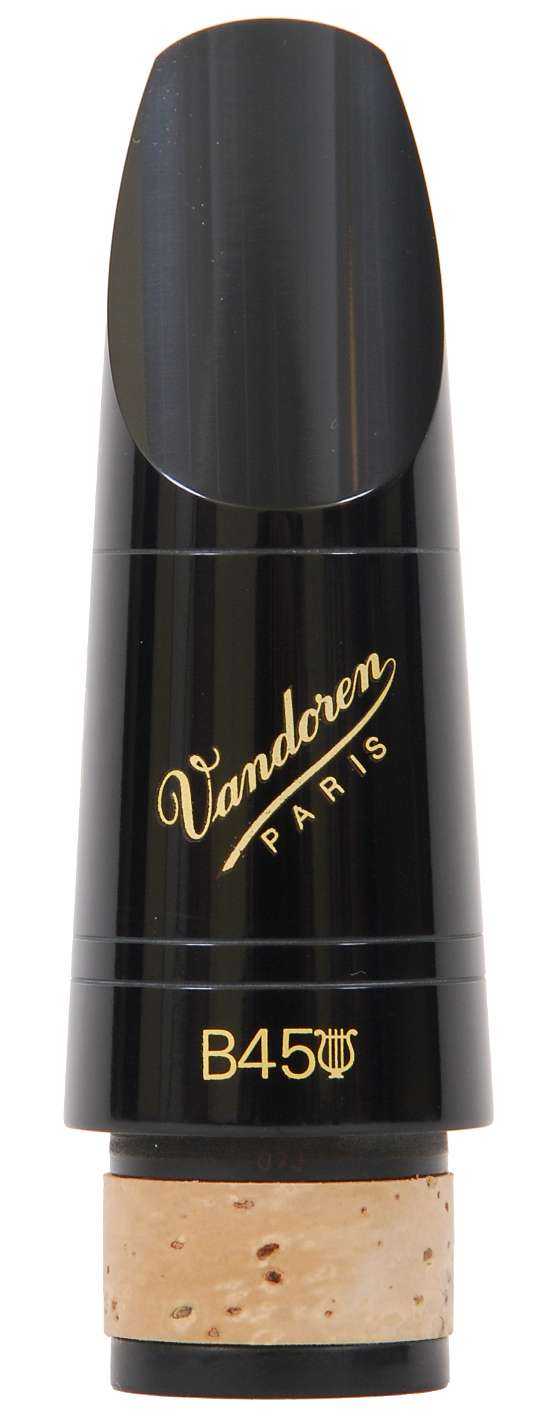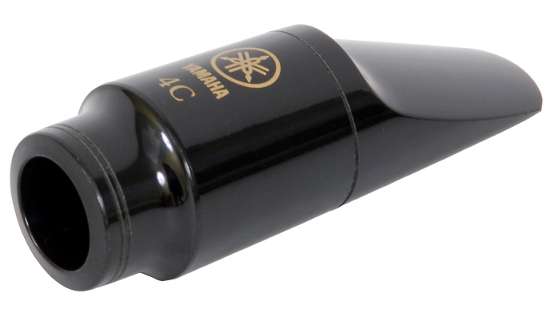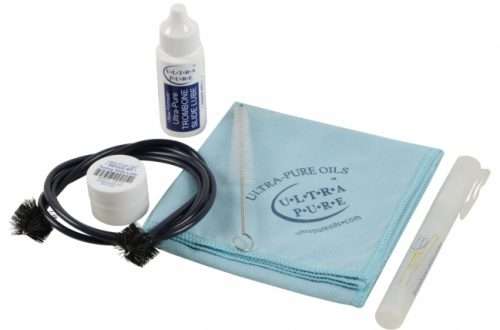
Clarinet mouthpieces
Choosing the right mouthpiece is extremely important for a clarinettist. For a musician playing a wind instrument, it is in a way what a bow is for a violinist. In combination with an appropriate reed, it is something like an intermediary, thanks to which we contact the instrument, so if the mouthpiece is properly selected, it allows for comfortable playing, free breathing and precise “diction”.
There are many manufacturers of mouthpieces and their models. They differ mainly in the quality of workmanship, material and the width of the gap, i.e. the so-called “deviation” or “opening”. Choosing the right mouthpiece is quite a complicated matter. The mouthpiece should be selected from several pieces, because their repeatability (especially in the case of manufacturers who make them by hand) is very low. When choosing a mouthpiece, you should be guided primarily by your own experience and ideas about the sound and playing. Each of us has a different structure, therefore, we differ in the way of teeth, the muscles surrounding the mouth, which means that each breathing apparatus is different from each other in some way. Therefore, the mouthpiece should be selected personally, taking into account personal predispositions to play.
Vando’s
The most famous company that produces mouthpieces is Vandoren. The company was founded in 1905 by Eugene Van Doren, a clarinetist at the Paris Opera. Then it was taken over by Van Doren’s sons, strengthening its position on the market with newer and newer models of mouthpieces and reeds. The company produces mouthpieces for clarinet and saxophone. The material from which the company’s mouthpieces are made is vulcanized rubber called ebonite. The exception is the V16 model for the tenor saxophone, which is available in a metal version.
Here is a selection of the most popular mouthpieces used by professional clarinetists or recommended for the beginning of learning to play. Vandoren gives the slit width in 1/100 mm.
Model B40 – (opening 119,5) popular model from Vandoren offering a warm, full tone when played on relatively soft reeds.
Model B45 – this is the model most popularized by professional clarinetists and most recommended to young students. It offers a warm timbre and good articulation. There are two other variations of this model: the B45 with a lyre is the mouthpiece with the greatest deflection among the B45 mouthpieces, and is especially recommended by orchestral musicians. Their opening allows a large amount of air to be freely introduced into the instrument, which causes its color to be dark and its tone round; The B45 with a dot is a mouthpiece with the same deviation as the B45. It is characterized by a full sound like the B40 and the ease of extracting the sound as in the case of the B45 mouthpiece.
Model B46 – a mouthpiece with a deflection of 117+, ideal for light music or for symphonic clarinetists who want a less expansive mouthpiece.
Model M30 – it is a mouthpiece with a deflection of 115, its construction provides greater flexibility, a very long counter and a characteristic open end ensure obtaining a similar sonority as in the case of the B40, but with a much lower difficulty of sound emission.
The remaining M series mouthpieces (M15, M13 with lyre and M13) are mouthpieces with the smallest opening among those produced by Vandoren. They have 103,5, 102- and 100,5 respectively. These are mouthpieces that allow you to obtain a warm, full tone when using harder reeds. For these mouthpieces, Vandoren recommends reeds with a hardness of 3,5 and 4. Of course, you should take into account the experience of playing the instrument, as it is known that a beginner clarinetist will not be able to deal with such a hardness of a reed, which should be introduced successively.

Yamaha
Yamaha is a Japanese company whose origins date back to the XNUMXs. In the beginning, it built pianos and organs, but nowadays the company offers a whole range of musical instruments, accessories and gadgets.
Yamaha clarinet mouthpieces are available in two series. The first is the Custom series. These mouthpieces are carved from ebonite, a high-quality hard rubber that offers deep resonance and sonic characteristics similar to those made of natural wood. At every stage of production, from the initial shaping of the “raw” mouthpieces to the final concept, they are made by experienced Yamaha craftsmen, ensuring the consistently high quality of their products. Yamaha has been collaborating with many great musicians over the years, conducting research to discover ways to continuously improve mouthpieces. The Custom Series combines experience and design in the production of each mouthpiece. The Custom series mouthpieces are characterized by a warm sound with exceptional, rich brightness, good intonation and ease of extracting sounds. The second series of Yamaha mouthpieces is called Standard. These are mouthpieces made of high-quality phenolic resin. Their construction is based on the higher models from the Custom series, and therefore they are a very good choice for a relatively low price. From among the five models, you can choose the option that best suits your personal preferences, as they have a different angle and a different length of the counter.
Here are some of Yamaha’s leading mouthpiece models. In this case, the dimensions of the mouthpiece are given in mm.
Standard series:
Model 3C – characterized by easy sound extraction and good “response” from low notes to higher registers even for beginners. Its opening is 1,00 mm.
Model 4C – helps to obtain an even sound in all octaves. Recommended especially for beginner clarinet players. Tolerance 1,05 mm.
Model 5C – facilitates the game in the upper registers. Its opening is 1,10 mm.
Model 6C – an excellent mouthpiece for experienced musicians who are looking for a strong sound with a dark color at the same time. Its opening is 1,20 mm.
Model 7C – a mouthpiece designed for playing jazz, characterized by a loud, rich sound and precise intonation. Opening volume 1,30 mm.
In the Standard series, all mouthpieces have the same counter length of 19,0 mm.
Among the Custom series mouthpieces there are 3 mouthpieces with a counter length of 21,0 mm.
Model 4CM – opening 1,05 mm.
Model 5CM – opening 1,10 mm.
Model 6CM – opening 1,15 mm.

Selmer Paris
The production of mouthpieces is at the core of Henri Selmer Paris, founded in 1885. The skills acquired over the years and modern production technologies contribute to their strong brand. Unfortunately, the company does not have such a rich offer as, for example, Vandoren, yet it is very popular all over the world, and both professional clarinetists and students and amateurs play on its mouthpieces.
The A / B clarinet mouthpieces are available in the C85 series with the following dimensions:
– 1,05
– 1,15
– 1,20
This is the deflection of the mouthpiece with a counter length of 1,90.
The White
Leblanc mouthpieces made of high-quality plastic have unique milling to enhance resonance, improve articulation and improve the reed’s performance. Finished to the highest standard, using the most modern computer equipment and manual work. The mouthpieces are available in various angles – so that each instrumentalist can adjust the mouthpiece to their own needs.
Camerata CRT 0,99 mm model – a good choice for clarinet players who switch from M15 or M13 type mouthpieces. The mouthpiece concentrates the air very well and provides better control over the sound
Model Legend LRT 1,03 mm – elegant, high-quality and resonant sound characterized by a very fast response.
Model Traditional TRT 1.09 mm – allow more airflow for the benefit of sound. A good choice for playing solo.
Model Orchestra ORT 1.11 mm – a very good choice for playing in orchestras. Mouthpiece for clarinet players with a solid stream of air.
Model Orchestra + ORT+ 1.13 mm – slightly greater deviation from O, requires more air
Model Philadelphia PRT 1.15 mm – designed for playing in the largest concert halls, requires a strong camera and a set of appropriate reeds.
Model Philadelphia + PRT+ 1.17 mm the largest possible deviation, offers a large focused sound.
Summation
The mouthpiece companies presented above are the most popular manufacturers in today’s market. There are many models and series of mouthpieces, there are other companies such as: Lomax, Gennus Zinner, Charles Bay, Bari and many others. Therefore, every musician should try several models from independent companies so that he can choose the best among the currently existing series.





